In this comprehensive exploration, we’ll dive into the world of ramen, unraveling its origins, varieties, and cultural significance. From the bustling streets of Japan to the cozy kitchens of home cooks, it has evolved into a global phenomenon, offering a unique blend of tradition and innovation.
Introduction to Ramen
What is Ramen?
Ramen, the Japanese Noodle Delight, has captured the hearts of food lovers worldwide. This iconic dish comprises wheat noodles bathed in a flavorful broth, typically enhanced with soy sauce (shoyu) or miso, and adorned with delectable toppings like sliced pork (chashu), nori (seaweed), and green onions. Ramen’s charm lies in its adaptability, allowing for infinite variations of broths, noodles, and toppings to craft a one-of-a-kind culinary adventure.
The Historical Background of Ramen
The journey of ramen began in China and made its way to Japan in the late 19th century, as detailed in this comprehensive history. Initially, it was a simple dish, but over time, it evolved, absorbing local flavors and ingredients. Post World War II, it experienced a surge in popularity in Japan, becoming a symbol of quick, affordable, and delicious food. Today, it’s celebrated as a gourmet dish, with ramen chefs continually experimenting and refining their recipes.
Popularity and Global Spread
The global spread of this dish is a testament to its universal appeal. From Tokyo’s alleys to New York’s trendy bars, this dish has crossed oceans and cultural boundaries. The introduction of instant versions in the 1950s played a significant role in its worldwide popularity, offering a taste of Japanese cuisine in a convenient, ready-to-eat form. Now, it is not just a meal; it’s a cultural icon, inspiring festivals, competitions, and a dedicated following of enthusiasts.
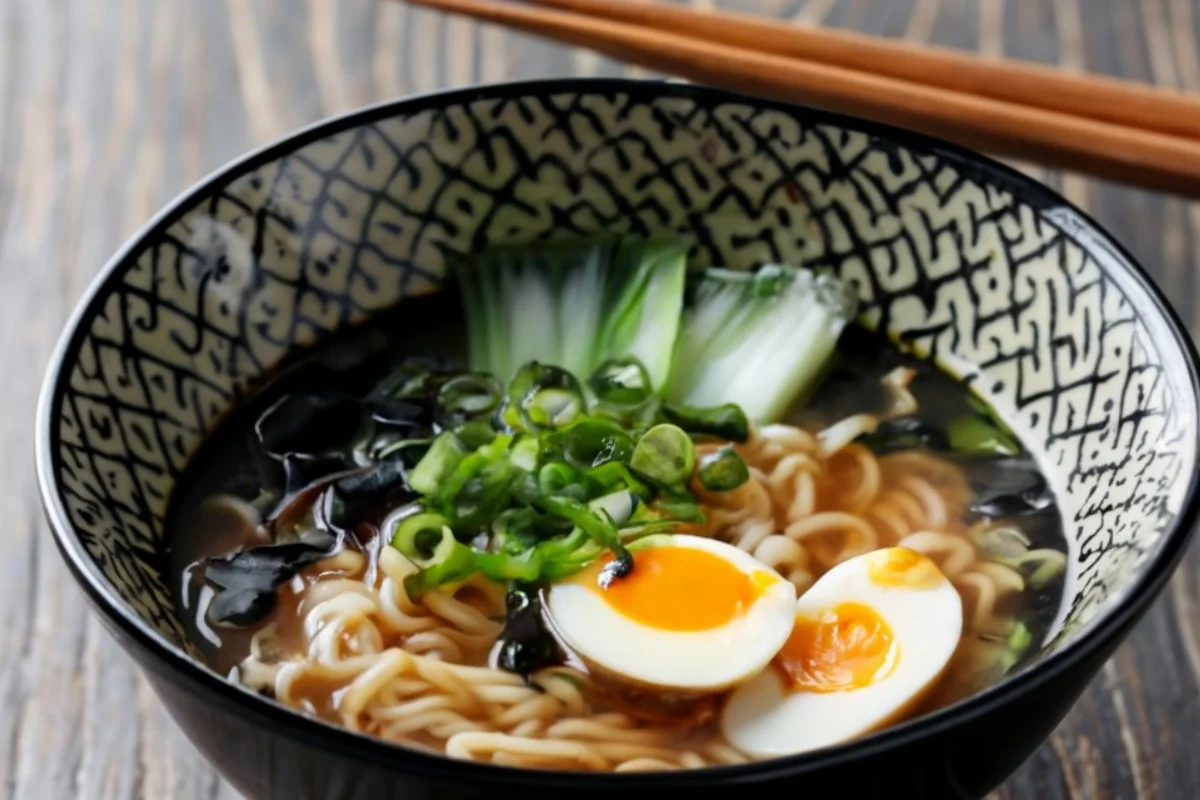
In the next section, we’ll explore the different types of ramen, each with its unique flavors and characteristics, showcasing the diversity of this beloved dish.
Exploring the Types of Ramen
Shoyu: A Soy Sauce Delight
Shoyu ramen, a classic choice with its clear, brown broth, is further explored in this article on ramen varieties. This type offers a salty, savory flavor, often balanced with a touch of sweetness. Toppings like bamboo shoots, green onions, and nori complement the rich broth.
Miso: A Flavorful Fusion
Hailing from Hokkaido, miso offers a unique twist, boasting a broth that harmoniously combines miso paste with chicken or fish stock, resulting in a rich, complex flavor. Toppings like corn, butter, and ground pork enhance the dish’s depth and richness.
Curry: A Spicy Twist
Curry offers a distinctive and flavorful take, infusing the rich, spicy essence of Japanese curry. This variety often features a thicker, more robust broth with a pronounced curry aroma and flavor. Toppings can range from breaded pork cutlets (katsu) to boiled eggs and vegetables, resulting in a hearty and satisfying culinary experience.
Shio and Other Varieties
Shio, predominantly seasoned with salt, is famed for its light, transparent broth, often crafted from chicken or seafood stock, resulting in a delicate flavor profile. Alongside these primary varieties, the world boasts countless regional and innovative adaptations, each showcasing its distinct twist.
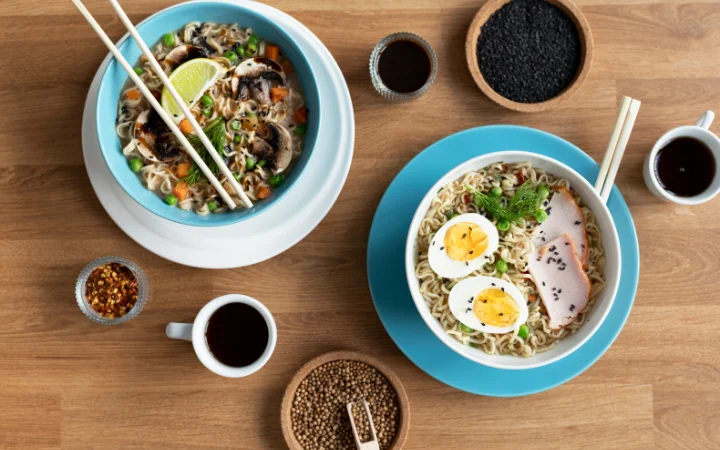
In the next part, we’ll delve into the essential ingredients and the art of preparing ramen, highlighting the key components that make this dish so special and beloved.
Ingredients and Preparation
Key Ingredients
In the world of ramen, the choice of ingredients is crucial, as highlighted in this New Yorker article on the history of this noodles. Firstly, the noodles, typically made from wheat, vary in thickness and texture. Secondly, the broth, the soul of ramen, ranges from light to rich, flavored with ingredients like pork bones, miso, or soy sauce. Lastly, the toppings, such as sliced meats, boiled eggs, and vegetables, add layers of flavor and texture.
Step-by-Step Preparation
Crafting is a harmonious blend of artistry and precision. Commencing with the broth, hours of simmering extract profound flavors from carefully chosen ingredients. Noodles are boiled to perfection, achieving the desired firmness. Lastly, the bowl comes together in a symphony of noodles, broth, and toppings, culminating in a delectable masterpiece.
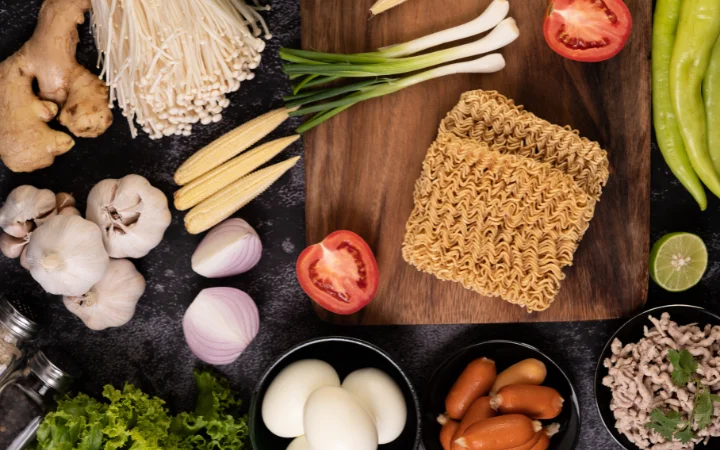
In the upcoming section, we’ll explore the regional variations of ramen, showcasing how this dish adapts and transforms across different cultures and locales.
Regional Variations of Ramen
Japanese Regional Varieties
In Japan, it boasts remarkable diversity, with each region infusing its own distinctive touch, as beautifully presented in this Google Arts & Culture feature. Tokyo, for instance, is renowned for its soy sauce-based broth, while Sapporo embraces miso as its signature dish. Furthermore, Hakata proudly showcases its luxurious tonkotsu. These regional variations capture local flavors and ingredients, offering a delightful exploration of Japan’s culinary landscape.
International Adaptations
It has transcended borders and adapted to cater to diverse tastes worldwide. In the United States, restaurants frequently explore unconventional ingredients and fusion flavors, resulting in innovative culinary creations. Likewise, across Europe, it embraces local produce and meats, forging a harmonious fusion of Eastern and Western culinary traditions.
Next, we will delve into the fascinating world of ramen culture, exploring its impact on media, dining, and tourism. This exploration will highlight how ramen has transcended its culinary roots to become a cultural phenomenon.
Ramen Culture
Ramen in Popular Media
The profound influence in popular media, spanning films, television, and literature, is vividly examined in this exploration of Culture. The Japanese film “Tampopo” playfully dives into the universe, while a multitude of anime and manga series pay homage to this delectable dish. Additionally, a proliferation of cookbooks and food blogs dedicated reflects the worldwide adoration for this iconic noodle soup.
Ramen Shops and Tourism
Establishments, spanning from cherished local gems to contemporary upscale venues, have evolved into culinary landmarks. In Japan, tours and tasting events captivate global enthusiasts, while cities like Tokyo and Osaka host vibrant festivals, solidifying the dish’s reputation as a cultural treasure.
In the next section, we will explore the nutritional aspects of ramen, discussing both its health benefits and concerns. This part will also provide insights into making ramen a healthier option, catering to the growing interest in well-being and balanced diets.
Nutritional Aspects of Ramen
Health Benefits and Concerns
The nutritional value of ramen, particularly its impact on health, is examined in this detailed analysis. On one hand, traditional can be a source of essential nutrients, especially when it includes a variety of vegetables and lean proteins. On the other hand, concerns arise with high sodium levels and the use of processed ingredients, particularly in instant varieties. Therefore, it’s important for enthusiasts to consider these factors when indulging in this beloved dish.
Making Ramen Healthier
Happily, there exist strategies to create healthier versions. Choices like whole-grain noodles or the inclusion of abundant fresh vegetables offer wholesome alternatives. Homemade broths, thoughtfully prepared, can notably diminish sodium content in contrast to store-bought or instant varieties. By embracing these modifications, aficionados can savor their beloved dish while prioritizing their well-being.
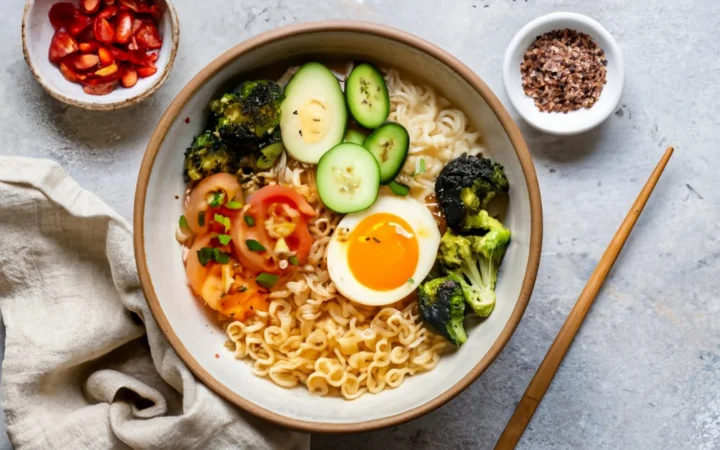
In the upcoming FAQs section, we’ll address common questions about ramen, providing valuable insights and tips for both seasoned aficionados and curious newcomers.
FAQs Section
What is the difference between this dish and instant noodles?
While both involve noodles, the key difference lies in their preparation and quality. Especially when made traditionally, it involves fresh ingredients and a carefully prepared broth. Instant noodles, on the other hand, are pre-cooked and often come with a packet of flavoring, focusing more on convenience than culinary depth.
Can vegetarian or vegan versions of ramen be made?
Absolutely! Vegetarian and vegan versions can be just as delicious. The broth can be made from vegetable stock, and toppings can include tofu, mushrooms, and an array of vegetables. With the growing interest in plant-based diets, many shops now offer vegetarian and vegan options.
How can I make authentic ramen at home?
To make authentic at home, start with a good quality broth, either chicken, pork, or vegetable-based. Prepare your noodles – either homemade or store-bought – and cook them until just right.
What are some common mistakes to avoid when making ramen?
Common mistakes include overcooking the noodles, using a bland broth, or overloading the bowl with too many toppings. It’s important to balance the flavors and textures, ensuring each component complements the others.
Where can I find the best ramen?
The best ramen can often be found in specialized ramen shops or Japanese restaurants. Many cities around the world now boast authentic ramen eateries, where skilled chefs prepare the dish with traditional techniques and ingredients.
Conclusion
Summary and Final Thoughts
In summary, ramen beautifully encapsulates culinary artistry and cultural diversity, evolving from street food to a global phenomenon, as explored in this insightful article, ramen has evolved from its humble beginnings to its status as a global phenomenon. Consequently, it has become a symbol of creativity and comfort in the culinary world. Ramen comes in various forms, including the classic Shoyu and Miso, as well as the hearty Tonkotsu and innovative Curry. Due to its versatility, it allows for endless experimentation and adaptation, making it a favorite among chefs and food enthusiasts alike. Furthermore, the cultural impact of ramen is undeniable, with its presence in media, influence on tourism, and role in bringing communities together.
While there are nutritional considerations to keep in mind, ramen can be a balanced and wholesome meal, particularly when prepared with fresh ingredients and mindful of health aspects. Additionally, the growing trend of vegetarian and vegan ramen showcases its adaptability to different dietary preferences.
In essence, ramen is not just food; it’s an experience, a comfort, and a joy. Whether you’re enjoying a bowl in a bustling Japanese alley, a cozy local shop, or your own kitchen, ramen offers a warm embrace of flavors and cultures. It invites us to explore, to taste, and to savor the rich tapestry of its history and its future.
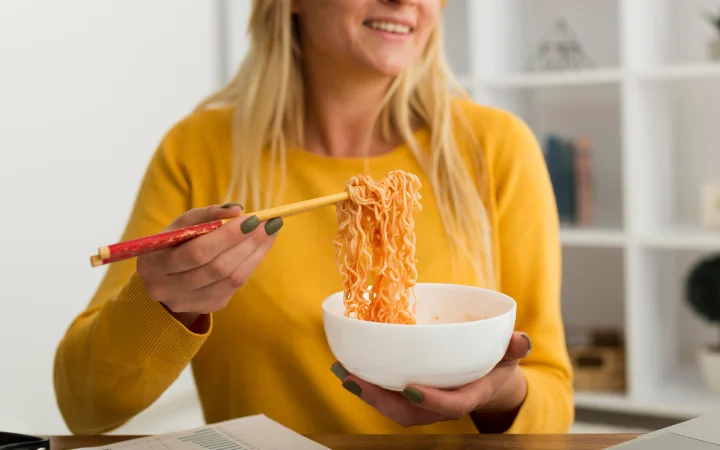
As we conclude this journey through the world of ramen, we’re left with a deeper appreciation for this remarkable dish. It serves as a reminder of the power of food to connect us, to inspire us, and to bring a little bit of joy into our everyday lives.
